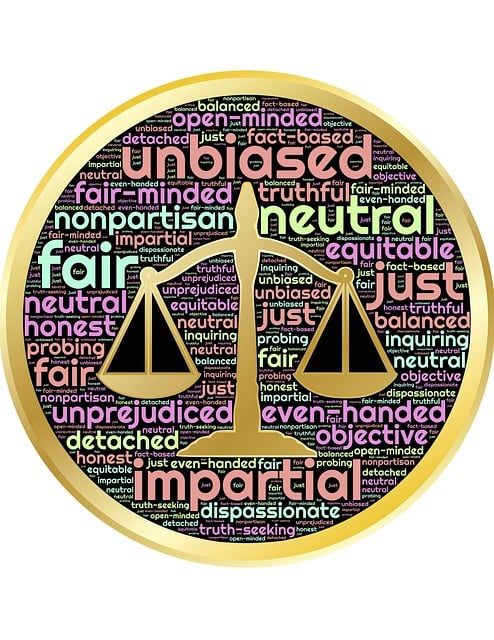Mail and wire fraud, utilizing traditional mail and digital networks for deception, are combated using libel case examples in civil courts worldwide. Common schemes involve impersonation and fake financial transactions, causing significant victim losses. Analyzing successful defense verdicts reveals patterns, offering strategies to dismiss charges in business dealings. Libel cases serve as powerful tools within the civil court system, establishing precedents for damages and deterring fraudulent activities. Understanding these cases is crucial for navigating complex legal landscapes, preserving communications, and proving intent beyond a reasonable doubt to secure favorable outcomes against mail wire fraud.
Mail and wire fraud are insidious crimes that exploit digital communication channels, posing significant risks to individuals and businesses alike. This article delves into the intricate world of these heists, offering a comprehensive guide to understanding, preventing, and mitigating their impact. We explore common schemes, dissect the legal framework, and present libel case examples from civil courts, highlighting best practices for evidence collection. By learning from these strategies, readers can fortify defenses against emerging threats in our digital age.
- Understanding Mail and Wire Fraud: Definition and Common Schemes
- Legal Framework: Civil Liability and Relevant Laws
- Case Studies: Libel in Mail and Wire Fraud
- Evidence and Proving Intent: Challenges and Best Practices
- Prevention and Mitigation Strategies for Individuals and Businesses
Understanding Mail and Wire Fraud: Definition and Common Schemes
Mail and wire fraud are serious criminal offenses that involve deceptive practices aimed at gaining financial or personal benefits. These crimes leverage traditional mail systems and digital communication networks, respectively, to execute fraudulent schemes. Understanding these concepts is crucial when navigating legal proceedings, as evidenced by various libel case examples in civil courts worldwide.
Common fraud schemes often include impersonation, where criminals pose as legitimate entities or individuals to trick victims into disclosing sensitive information or making financial transactions. Another scheme involves the use of fake checks or money transfers, where culprits promise substantial returns but deliver nothing, resulting in significant losses for their victims. By studying these cases, it’s possible to identify patterns and learn from successful winning challenging defense verdicts, ultimately leading to a complete dismissal of all charges in respective business transactions.
Legal Framework: Civil Liability and Relevant Laws
In the legal landscape surrounding mail wire frauds, understanding the framework of civil liability is paramount. The relevant laws vary across jurisdictions but generally aim to deter and penalize individuals and entities involved in fraudulent activities. When it comes to holding perpetrators accountable, one powerful tool is the libel case within the civil court system. These cases have set precedents for recovering damages and sending a strong message about the consequences of such crimes. For instance, successful libel claims against those who disseminate false information through mail or electronic means can result in substantial monetary awards.
The legal battles often pit corporate and individual clients accused of white-collar offenses against agile prosecutors seeking justice. Defending against these charges requires a winning challenging defense strategy tailored to the specific allegations. Past cases have showcased how skilled legal representation can lead to favorable outcomes, including not-guilty verdicts or reduced sentences. This highlights the importance of robust legal frameworks in combating mail wire frauds effectively while ensuring fair treatment for all parties involved.
Case Studies: Libel in Mail and Wire Fraud
Mail wire fraud cases often involve complex legal battles, particularly when libel is a factor. Libel case examples in civil courts have shown that the interpretation of communications can significantly impact outcomes. For instance, a defendant might claim that their messages were misconstrued or taken out of context, leading to a complete dismissal of all charges if the court agrees. These cases require meticulous analysis of every communication, from initial complaints to subsequent responses, to determine intent and any potential defamation.
Understanding how these investigations unfold is crucial. The process involves multiple stages, from the initial report to evidence collection and witness interviews. Defendants often aim to navigate this labyrinthine process by providing clear explanations and documentation, ensuring their actions are within legal boundaries. A successful defense strategy might include demonstrating that communications were made in good faith or with no malicious intent, which can lead to avoiding indictment altogether.
Evidence and Proving Intent: Challenges and Best Practices
Proving intent in mail wire fraud cases is a complex task that requires robust evidence and a deep understanding of legal principles. In the digital age, where communication and transactions occur online, tracing and presenting evidence can be challenging. For instance, in libel case examples within civil courts, establishing the defendant’s knowledge of false statements and their intention to cause harm is crucial for a successful prosecution. Prosecutors must navigate through electronic trails, including emails, instant messages, and digital records, which may be manipulated or deleted.
Best practices include preserving all relevant digital communications, utilizing forensic techniques to recover deleted data, and employing expert witnesses who can analyze these records. Additionally, the involvement of both corporate and individual clients in these cases necessitates a strategic approach. By combining direct evidence, indirect evidence through patterns and behavior, and leveraging the insights from philanthropic and political communities’ legal precedents, prosecutors can build winning challenging defense verdicts, demonstrating intent beyond a reasonable doubt.
Prevention and Mitigation Strategies for Individuals and Businesses
Mail wire fraud is a sophisticated and increasingly common scheme that requires proactive prevention and mitigation strategies for individuals and businesses alike. To stay ahead of these criminal activities, it’s crucial to understand the various tactics employed by scammers. These include phishing emails, fake websites, and impersonation of legitimate organizations to trick victims into revealing sensitive information like passwords or financial data.
For individuals, enhancing digital literacy and practicing caution when sharing personal details online is paramount. Regularly updating security software and being wary of unsolicited emails or messages are effective measures. Businesses, on the other hand, should invest in robust cybersecurity systems, employee training, and regular audits to identify vulnerabilities. By leveraging technology, such as two-factor authentication and encryption, companies can fortify their defenses against these crimes. Moreover, staying informed about libel case examples in civil court, particularly those involving mail wire fraud, provides valuable insights into successful prevention and mitigation strategies, ensuring a strong defense throughout all stages of the investigative and enforcement process. An unprecedented track record of success in avoiding indictment is achievable through proactive security measures tailored to each organization’s unique needs.
Mail and wire fraud, a persistent threat in today’s digital age, demands a comprehensive understanding of its legal implications. This article has explored various aspects, from defining common schemes to discussing prevention strategies. As evidenced by libel case examples in civil courts, the consequences of such frauds can be severe. By recognizing potential risks, individuals and businesses can fortify their defenses, ensuring compliance with relevant laws while safeguarding their reputation and interests in an ever-evolving digital landscape.






